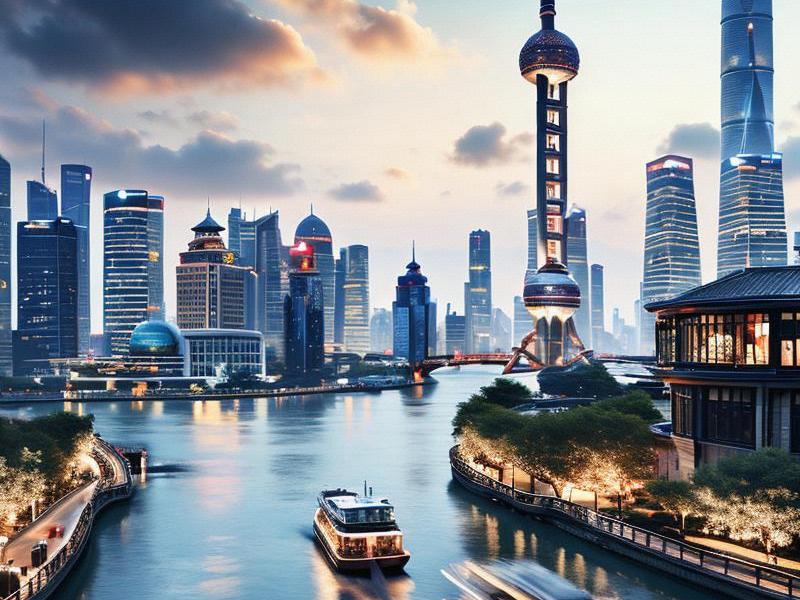Shanghai and Its Surroundings - An English Perspective
⏱ 2025-05-01 22:54 🔖 上海娱乐千花坊联盟
📢0℃

Nestled on the eastern coast of China, Shanghai stands as a beacon of modernity and a bridge between the East and the West. From the towering skyscrapers of the Lujiazui Financial District to the serene waters of the Huangpu River, Shanghai is a city that never ceases to amaze. But beyond its iconic skyline lies a tapestry of history, culture, and natural beauty that surrounds this bustling metropolis.
The Pudong New Area, once a rural expanse, has transformed into a global financial hub. The iconic Oriental Pearl Tower, the Jin Mao Tower, and the Shanghai World Financial Center are not just architectural marvels but symbols of China's economic prowess. These structures, visible from almost every corner of the city, tell the story of Shanghai's rapid urban development and its ambition to be a global city.
As an English-speaking observer, one cannot help but marvel at the juxtaposition of old and new in Shanghai. The Bund, with its colonial-era buildings, offers a glimpse into the city's history when it was known as the "Paris of the East." Walking along the Bund, one can see the reflection of the modern skyline across the Huangpu River, a visual metaphor for the city's evolution.
The surrounding areas of Shanghai are equally captivating. The ancient town of Zhujiajiao, with its network of canals and stone bridges, is a UNESCO World Heritage site that showcases the traditional water towns of the Yangtze River Delta. Here, time seems to stand still, and visitors can immerse themselves in the tranquility of a bygone era. The town's well-preserved architecture and quaint shops offer a stark contrast to the bustling city just a short distance away.
上海贵族宝贝sh1314
Another gem in Shanghai's vicinity is the Songjiang District, known for its beautiful gardens and historical sites. The Songjiang campus of Fudan University, with its serene environment, is a testament to the blend of education and nature. The district also houses the Songjiang Mosque, one of the oldest mosques in China, reflecting the city's rich multicultural heritage.
The cultural scene in Shanghai is as diverse as its landscape. The city is home to numerous art galleries, theaters, and music venues that cater to a wide range of tastes. The Shanghai Museum, with its extensive collection of Chinese art, is a must-visit for art enthusiasts. The city's vibrant theater scene includes traditional Chinese opera, modern plays, and international performances, making it a cultural melting pot.
Food is an essential part of any exploration of Shanghai and its surroundings. From the famous xiaolongbao (soup dumplings) in Nanxiang to the delicate xiebing (pan-fried pancakes) in Zhujiajiao, the region offers a culinary journey that reflects its diverse influences. Street food vendors in places like the Yuyuan Garden area provide a taste of the city's vibrant street culture.
上海品茶工作室
The English-speaking perspective on Shanghai and its surroundings is one of admiration and curiosity. The city's ability to blend the old with the new, to preserve its cultural heritage while embracing modernity, is a testament to its resilience and adaptability. For international visitors, Shanghai is not just a destination but an experience that offers a glimpse into the future of urban living.
The rapid urban development in Shanghai has not been without challenges. The city has had to balance economic growth with environmental sustainability and social equity. Initiatives such as the construction of green spaces, the promotion of public transportation, and the preservation of historical sites are part of Shanghai's commitment to sustainable development.
The surrounding areas also face their own set of challenges. The rapid expansion of urban areas into rural landscapes has raised concerns about the loss of agricultural land and the impact on local communities. Efforts are being made to preserve the natural beauty of these areas while promoting sustainable tourism.
爱上海
From an English-speaking perspective, Shanghai and its surroundings offer a unique opportunity to study the complexities of urbanization in China. The city's transformation from a small fishing village to a global metropolis is a story of ambition, innovation, and resilience. It is a story that resonates with people around the world who are grappling with similar challenges in their own urban centers.
The cultural heritage of Shanghai and its surrounding areas is a rich tapestry that reflects the city's history and diversity. The blend of traditional Chinese culture with influences from the West has created a unique cultural identity that is both dynamic and inclusive. For international visitors, exploring this cultural heritage is an enriching experience that provides insights into the complexities of Chinese society.
In conclusion, Shanghai and its surroundings are a fascinating subject for an English-speaking perspective. The city's rapid urban development, rich cultural heritage, and commitment to sustainable growth make it a unique destination that offers a glimpse into the future of urban living. From the iconic skyline of the Lujiazui Financial District to the serene waters of the Huangpu River, from the ancient town of Zhujiajiao to the vibrant cultural scene of the city, Shanghai is a city that never ceases to amaze.
The surrounding areas of Shanghai, with their natural beauty and historical significance, add another layer of complexity to this fascinating region. The challenges and opportunities that Shanghai and its surroundings present are a testament to the resilience and adaptability of this dynamic city. For international visitors, exploring Shanghai and its surroundings is an enriching experience that provides insights into the complexities of urbanization in China and the rich cultural heritage that makes this region a fascinating subject for international attention.
Shanghai's Digital Muse: How Tech-Savvy Women are Redefining Femininity in the Megacity【霓虹记忆】上海娱乐会所30年浮沉录Shanghai 5200: Quantum Symbiosis Nexus and the Photonic Civilization Matrix【霓虹与素笺】上海女性审美变迁录(1920-2025)Shanghai's Journey to Becoming a Global Innovation Hub【上海女儿】从百乐门到BFC:三代沪上名媛的衣香鬓影录Shanghai 5300: Quantum Symbiosis Nexus and the Photonic Civilization Matrix【虹桥纪事】上海西大门的百年流量密码Shanghai 5350: Quantum Leisure Singularity and the Galactic Nightlife Matrix【梧桐密码】——解码上海街区的十二层时空褶皱

